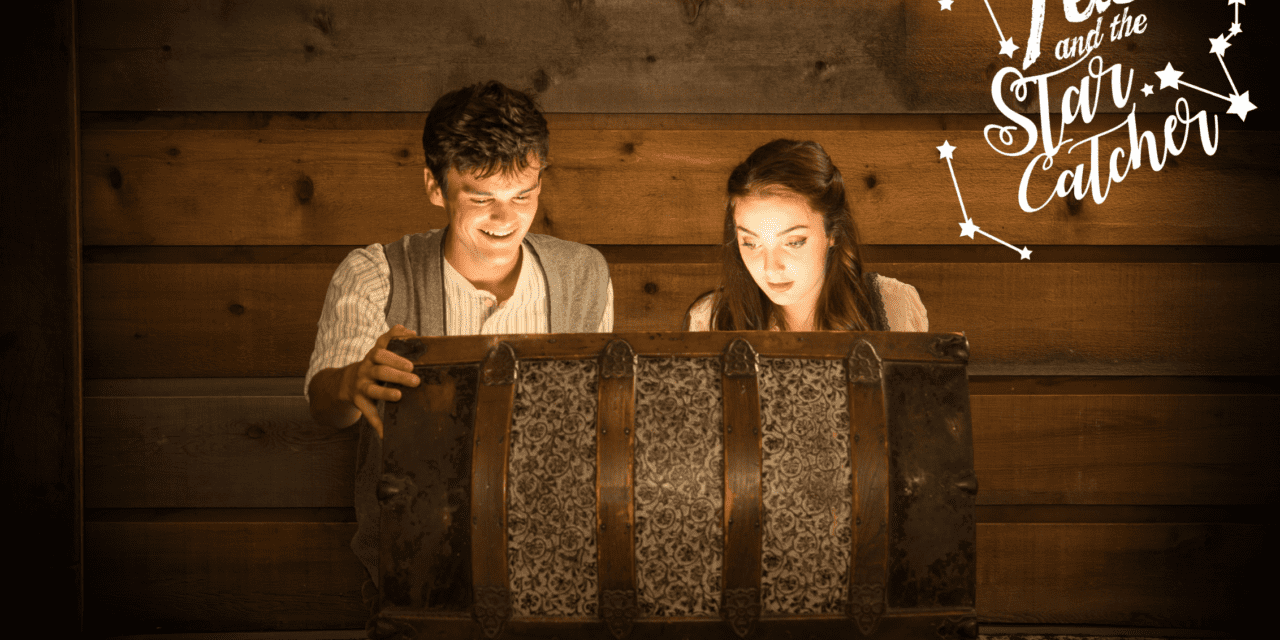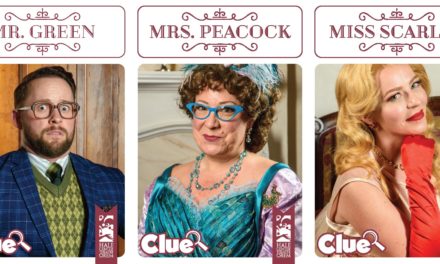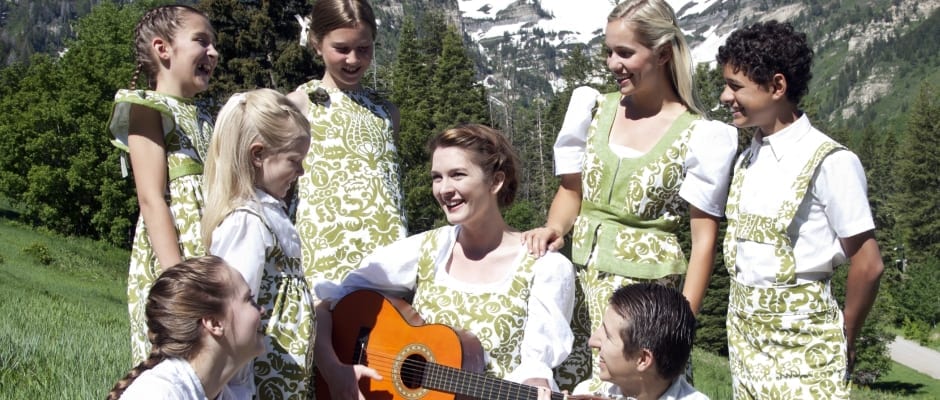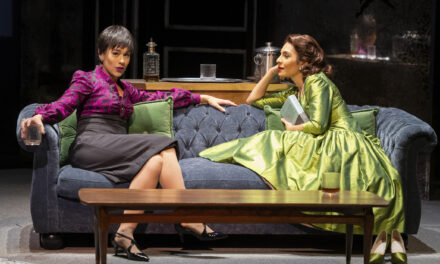OGDEN — There is a magic in creation. It can come from anywhere, whether a person makes the perfectly working and color-coded spreadsheet or writes a perfect song reflecting their emotions. More often, it can feel like modern society lost the magic of creation. I have four kids 6-years-old and younger. They are in a constant state of creation. Seeing them so willingly create makes me wish I could have “just stayed a boy for a little while.” Peter and the Starcatcher, written by Rick Elice and based on a novel by Dave Barry and Ridley Pearson, evokes that sense of wonder and playful creation.

Show closes September 2, 2017.
In simplest terms, it follows the origin story of Peter Pan. While on a ship, the nameless orphan, Boy, meets the confident Molly who is protecting “starstuff” with her father, Lord Aster. As Molly and Peter jockey for position as the leader, they protect the starstuff from a villainous pirate, Black Stache. Through their journey, the audience learns why Peter wants to remain a boy; how he ended up on an island named Neverland; where the mermaids, natives, and a giant crocodile came from; why Peter can fly; and how he became the hero with the archenemy Captain Hook. All of this happens in a manner that shows the freedom of a child making up the play as they go. The characters use fourth wall narration. Most actors play multiple characters by simply changing a hat, an apron, or a coat. Theatricality is expected and exploited at every chance, whether it is walking a circle around a door to see a different room each time it is opened, or shaking a silk sheet as an ocean characters can swim and drown in, while shooting off-hand comments to each other.
I greatly anticipated reviewing Ziegfeld Theater’s production in Ogden for several reasons. Being a redheaded boy, I naturally associated myself with Peter Pan from the first Disney viewings. I played the titular character of J. M. Barrie’s original play once during college. I have loved most iterations of Peter Pan. I eagerly followed the Broadway production and the first performances in Utah. I also saw the Pioneer Theatre production in 2014 and the West Valley Hale production in 2016. This deep connection with the character, enjoyment of my previous show experiences, and the desire to escape and write about Neverland left me anxious to catch this opportunity but also affected by the shadow of these experiences.

Wyatt Welch as Boy and Jessica Lewis as Molly.
I was first impressed upon seating to see the three-man band (Jonathan McDonald, Richard Marsh, and Kyle Lawrence) sitting upstage below the rising platform, all decked out in sailors outfits. The three effectively provided pleasant background music and sound effects for most of the show. During the second act they were hidden, but their presence was appreciated especially in such a uniquely paced show full of occasional improv moments.
The rest of the show came together like a good piece of music with only a couple missed notes. There was an odd music or sound effect cue right at the beginning that stood out and the occasional speaker sound oddity. It was not very prevalent, mainly noticeable to my reviewer’s ears. Hang ups mainly came at the cost of timing, but did not plague the production. One noticeable example of this is the magical moment when Molly shows Boy that she can hover several inches off the ground. There was an almost painstaking effort to set up the plank and remove it that slowed the action. This is hard because the scene is so pivotal to Boy and Molly’s relationship and the overt effort caused the show to lose some pixie dust. Moments like this, however, did not define the evening. Director Jim Christian kept a tight ship as he steered the generally fast-paced and sometimes frenetic script. It is clear by the general melding of the technical and acting elements that Christian relished finding solutions as he directed and choreographed the unique sequences. For example, the swimming-based choreography that finished the first act clearly showed the efforts of all the characters at that moment and also allowed the focus to be pulled towards Peter floating on the chest towards the island. Christian also did a good job of wrangling the constantly changing characters the actors play to choreograph the broad landscape of the show. When the actors were playing their parts as a team of extras, it all fit together wonderfully. However, several of the minor named characters were flat and were harder to connect with.

Trent Cox as Black Stache.
Wyatt Welch was the Boy who eventually becomes Peter Pan. At times,Welch does not always fully connect to the full depth of the story being provided to him as the abused orphan boy, and occasionally struggles with the complicated love-interest moments with Molly. But Welch exhibits a strong belief in the hopefulness of Peter by the end. He also intently shows he is “the kind of boy who doesn’t miss much.” That statement is deftly provided by Jessica Lewis as Molly. Lewis shows her true ability to be the leader by the way she commands her scenes. Her ability to add in the quick after jabs so commonly provided by an insatiably curious and competitive teenager is excellent.
The only actors more capable of drawing a laugh are Black Stache and his sidekick, Smee. If you are tired of forgettable and generic villains, then Black Stache (played by Trent Cox) and the halfwit Smee (played by Timothy Behunin) are a breath of fresh sea air. Black Stache’s route to infamy is a little unexpected at first glance. This “Nancy” of a pirate captain is still ruthless, but also needs Smee to frequently correct his grammar slips and is strangely aware of his own place as the villain in the story and his need for a true hero. Cox and Behunin do not disappoint in any scene. I appreciated that while Black Stache is written as a foppish character that Cox’s natural voice tone avoids overemphasizing the possible stereotype. Both Cox and Behunin are quick to reload on the verbal jabs, and waltz effortlessly around the stage as merciless preening pirate and his fool of a first mate.
Finally, I loved where the props and stage dressing by Cindy Nichols showed the creative mind a child might use. Actors walked in with leaf-imprint designed umbrellas to emphasize a jungle. The parachute-style cloth when Peter fell into the mermaid grotto functionally allowed him to float in the golden waves and at the same time created a mermaid’s tail. These moments rewarded the audience’s faith and trust by letting my imagination soar.
Neverland and all its inhabitants have drawn generations of fictional characters and audiences back over and over again. There are many reasons the themes and characters pull audiences back. Ziegfeld’s Peter and the Starcatcher is another successful attempt to make me believe in the magic of youthful creation and prospect of youthful immortality. Audiences should fly to this production and escape for a little while.





